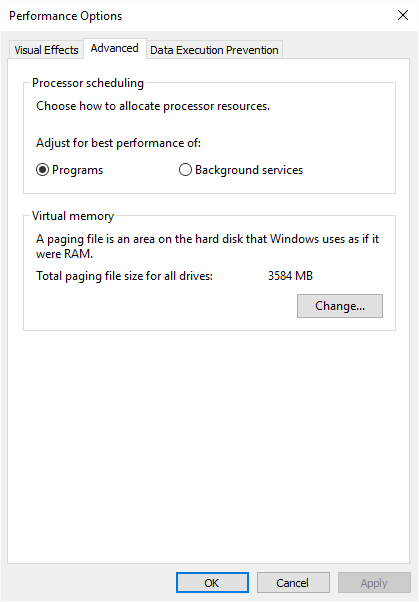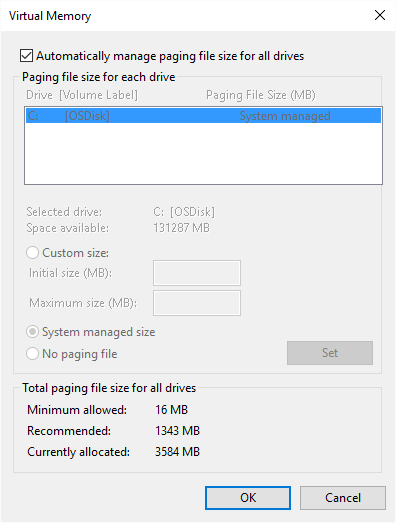At some point in time you may want to move your page file to a different location. Perhaps you've gotten a new disk whose size and/or speed is more appropriate to hold the page file. Whatever the case, you can move your page file to a different location by following these steps:

Figure 1. The System Properties dialog box.

Figure 2. The Performance Options dialog box.

Figure 3. The Virtual Memory dialog box.
You may now decide to remove the old page file from the previous drive. To do this, go through the same steps, but in step 9 select the old disk where the page file used to be and click the No Paging File radio button.
If you are using Windows 7, the steps to move the page file are almost identical; the biggest difference is in getting to the System Properties dialog box. You can follow these steps to display the dialog box:
Once at the dialog box you can continue with the earlier steps, starting with step 3.
![]()
![]()
![]() This tip (12706) applies to Windows 7, 8, and 10.
This tip (12706) applies to Windows 7, 8, and 10.
The ChkDsk utility is a nice feature of Windows that lets you keep tabs on the health of your disk drives. This tip tells ...
Discover MoreWindows 10 provides two ways to password protect files and folders. One way is to use the Zip utility, as discussed in a ...
Discover MoreRestore points are good to have in case a problem occurs while trying to make changes to your system. If for some reason ...
Discover More2020-05-11 08:52:07
Jim
Is the objective of moving the page file to improve performance by putting it on a faster drive? Or is it to free up space on the boot SSD drive?
Copyright © 2026 Sharon Parq Associates, Inc.
Comments